Genetic Optimization // Bio-Mesh
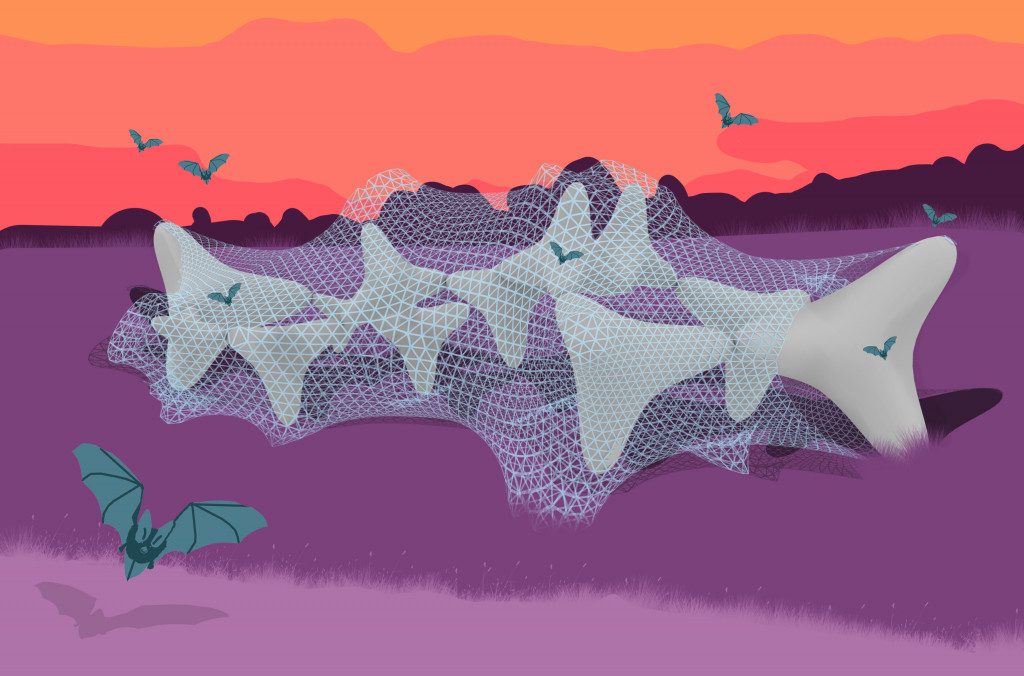
Objective:
An exploration into genetic optimization of a buildings skin through Biomorpher for Grasshopper.
Using the studio project Mal-Aria from Self Sufficient Buildings, a form finding exploration is undertaken to create a skin to cover the main building form. Specifically, Mal- Aria explores the relationship and cohabitation of mosquitoes, humans and bats.
Project Agenda:
In short, the building form is made up of 12 connected Tetrapods. The skin will help to provide support to the overall form and some protection from direct sunlight hitting the Tetrapods. Furthermore, after exploring materiality, the mesh will be made from Sisal fibre, a fibre that is farmed across Tanzania where the building is located.
Consequently, a script is written to be able to explore the form of the skin using a mesh.
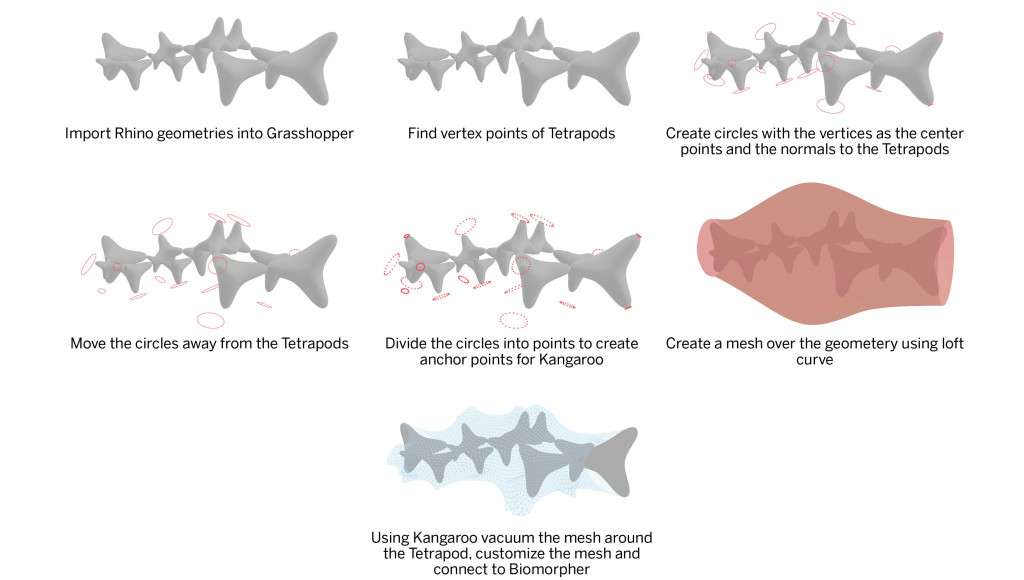
Fitness Value Objectives:
Due to using local farmed sisal fibre that requires time to harvest and process, the area of the skin needs to be minimised. To create a smoother junction between the anchor points and the mesh, the number of anchor points is to be maximised. This will also help in securing the skin to the Tetrapods and keeping the mesh outside the Tetrapods.
The Parameters
- The radius of the rings- This is contolled by a Gene Pool. Therefore, each radius can be individually controlled.
- The distance of the rings from the Tetrapods- Similarly, this is controlled by a Gene Pool for the same reason.
- The number of anchor points- Controlled by a slider
- Thickness of the mesh- Controlled by a slider

Algorithm Code
The code is divided into 5 main parts. First, the imported Tetrapod forms from Rhino. Secondly, the Tetrapod vertices are extracted, manipulated and turned into anchor points. Then, there is the initial mesh that will form the skin. The most heavy part of the code is the Kangaroo aspect that forms the shape of the mesh. Finally, the last part includes the mesh output and adding Biomorpher.

The Catalogue:
Biomorpher was run twice. The first catalogue only minimises the area and maximises the anchor points in the last two generations. The first few generations ran without defining any fitness value objectives. The options highlighted in red are the optimum meshes based on the parameters and fitness values. The options highlighted with a black box are the options chosen for the next generation.
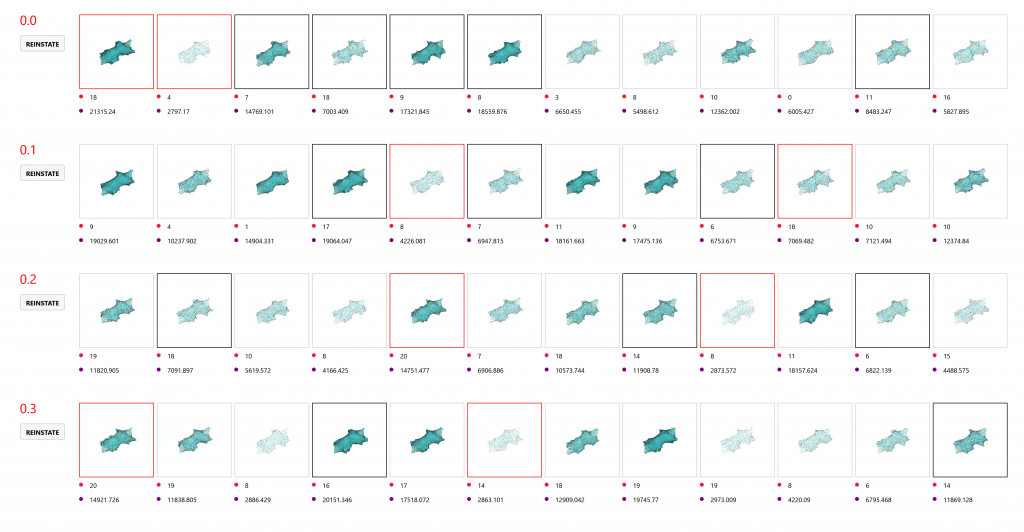
Then, the solver ran again taking a different approach. After the initial population was created, the fitness value objectives were defined. Maximise the number of Anchor points and minimise the mesh area.

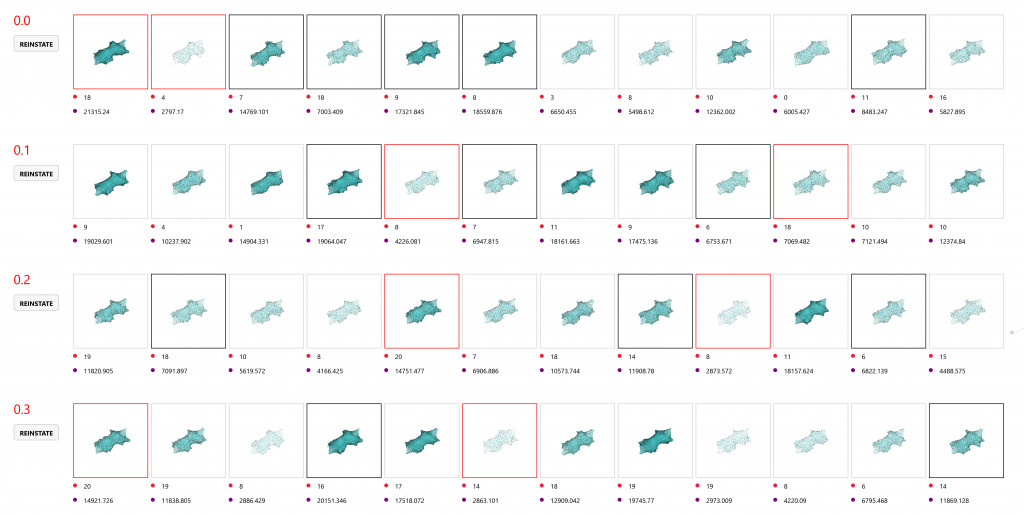
Unlike the first run, generation 0.2 was reinstated from the above catalogue and the results were recalculated from this point.
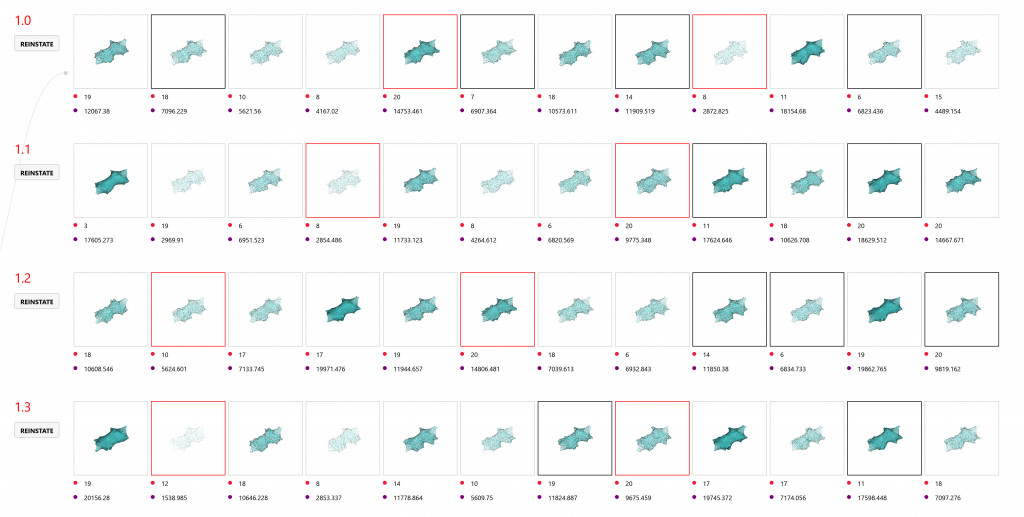
Even though the same parameters were used, it is interesting to see how the evolutionary solver results vary. Furthermore, seeing how a computer would generate a form and comparing to what you have in mind is very interesting.
Video:
Genetic Optimization // Bio-Mesh is a project of IaaC, Institute for Advanced Architecture of Catalonia developed at Master in Advanced Architecture, in 2018/2019 by:
Students: Fiona Clara Louise Demeur
Faculty: Rodrigo Aguirre
Student Assistants: Daniil Koshelyuk and Nikoleta Mougkasi